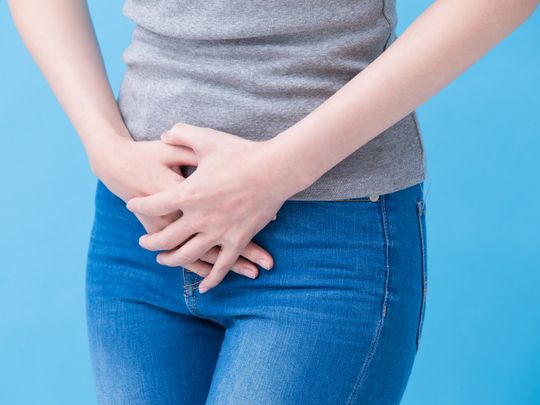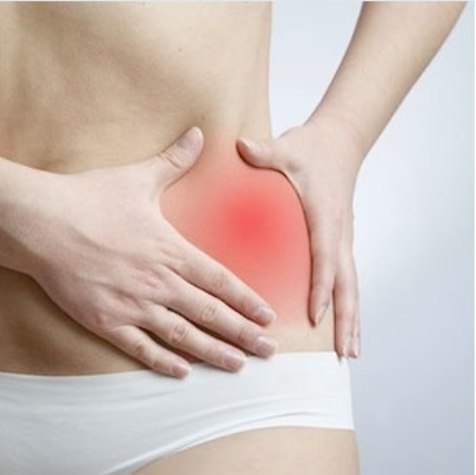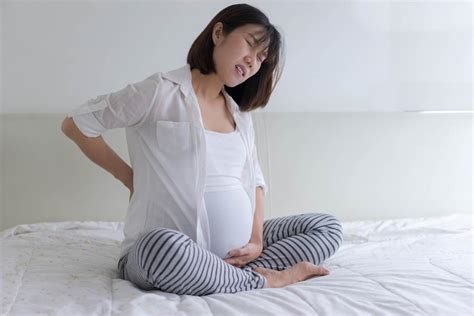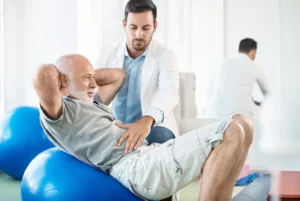Understanding Pelvic Girdle pain (PGP) and Symphyse Pubic Dysfunction (SPD) during pregnancy
Pregnancy is a remarkable journey, but it often comes with various physical challenges. Two common issues that pregnant individuals may face are Pelvic Girdle Pain (PGP) and Symphysis Pubis Dysfunction (SPD). Both are non-specific diagnoses that encompass various problems, and understanding their causes is essential for effective treatment. Addressing these issues early can significantly improve comfort and mobility during pregnancy but also help for the delivery as the body is more mobile and more able to adapt.

What Are PGP and SPD?
PGP and SPD refer to pain experienced in different areas of the pelvic region. PGP often involves the lower back or posterior pelvis, while SPD is typically localized in the anterior part of the pelvis. However, these terms are non-specific and do not point to a singular cause. To treat these conditions effectively, a therapist must identify the underlying source of the pain.
Manual examination is essential in diagnosing PGP and SPD to differentiate between causes that may present in very similar locations. For example, pain around the pubic symphysis could stem from inflammation of the pubic symphysis itself, the insertion of the adductor muscles, or the insertion of the abdominal muscles. A detailed assessment is crucial to pinpoint the exact cause.
PGP and SPD often arise due to a combination of hormonal and postural changes during pregnancy. Hormonal shifts, particularly the release of relaxin, lead to ligament laxity and increased mobility in the pelvic joints, preparing the body for childbirth. This increased mobility can sometimes result in joint instability and inflammation. Postural changes, including a shift in the center of gravity, hip external rotation, and the added weight of the growing baby, can place additional stress on the pelvic region, contributing to muscle spasms and discomfort.
What Causes PGP and SPD During Pregnancy?
Pelvic Girdle Pain (PGP)
PGP often involves pain in the lower back or posterior pelvic area. The primary causes include:
- Inflammation of the Sacroiliac Joint: Hormonal changes during pregnancy, particularly the release of relaxin, loosen ligaments to prepare the body for childbirth. This loosening can lead to inflammation as the pelvis opens to accommodate the growing baby and prepare for delivery.
- Muscle Spasms of the Gluteus Maximus and Piriformis: Postural changes, such as hip external rotation, and the increased weight carried during pregnancy can cause these muscles to spasm, leading to discomfort.
Symphysis Pubis Dysfunction (SPD)
SPD typically refers to pain localized in the anterior part of the pelvis. Common causes include:
- Inflammation of the Inguinal Ligament
- Inflammation of the Pubic Symphysis
- Inflammation of the Adductor or Abdominal Muscle Insertions on the Pubic Symphysis
Symptoms of PGP and SPD

PGP and SPD symptoms can vary but often include:
- Pain in the lower back, posterior pelvis, or anterior pelvis
- Discomfort radiating to the thighs
- Difficulty walking or climbing stairs
- Pain while turning in bed
- Clicking or grinding sensations in the pelvic region
How Are PGP and SPD Diagnosed?
A physiotherapist or healthcare provider can diagnose PGP and SPD through a detailed assessment, which may include questions about symptoms, medical history, and physical examinations. Manual examination plays a vital role in differentiating between causes, especially when pain locations overlap, such as in the pubic symphysis area. Identifying the specific cause of pain is crucial for effective management.

Managing PGP and SPD During Pregnancy
Fortunately, both PGP and SPD can be managed with appropriate interventions. Here are some strategies:
- Physiotherapy: A physiotherapist trained in women’s health can provide tailored exercises to strengthen pelvic and core muscles. Hands-on techniques, such as gentle joint mobilizations, can help alleviate discomfort.
- Manual Therapy: Manual therapy provided by an osteopath or physiotherapist can offer rapid relief from pain. This approach often forms the foundation of treatment and must be followed by maintenance strategies, including exercises and support belts, to sustain the benefits.
- Exercise: Specific exercises, such as pelvic tilts and gentle stretches, can improve mobility and relieve pain. However, activities that exacerbate symptoms should be avoided.
- Support Belts: Pelvic support belts can provide stability and reduce strain on the pelvic joints. We recommend the Physio-Mat support belt, which effectively supports the sacroiliac joint and pubic symphysis.
- Postural Awareness: Maintaining good posture while sitting, standing, and walking can reduce unnecessary stress on the pelvis.
- Hydrotherapy: Exercising in water can reduce pressure on the joints while strengthening muscles.
When to Seek Help
If PGP or SPD significantly interferes with daily activities or causes severe pain, it is crucial to seek help from a healthcare professional. The earlier the intervention, the better, as initial symptoms can lead to compensations that severely limit mobility. These compensations may make it difficult for pregnant individuals to walk, move around (particularly in bed), or carry on with daily life. Restricted movement can hinder participation in sports and exacerbate symptoms, creating a vicious cycle that complicates the condition further.
Timely treatment not only relieves pain but also maintains mobility, a key factor for a smoother delivery and helping the baby move effectively through the birth canal.
The French Approach to PGP and SPD
At My French Physio, we adopt a comprehensive and hands-on approach to managing PGP and SPD. Our expert team combines manual therapy with individualized exercise programs to address the root cause of discomfort. With over 15 years of experience, we ensure every patient receives the care and support they need for a comfortable pregnancy journey.
Conclusion
PGP and SPD are manageable conditions, and with the right support and strategies, pregnant individuals can alleviate pain and maintain an active lifestyle. Don’t let these issues overshadow the joy of pregnancy—seek professional help and take steps to care for your body during this transformative time.



